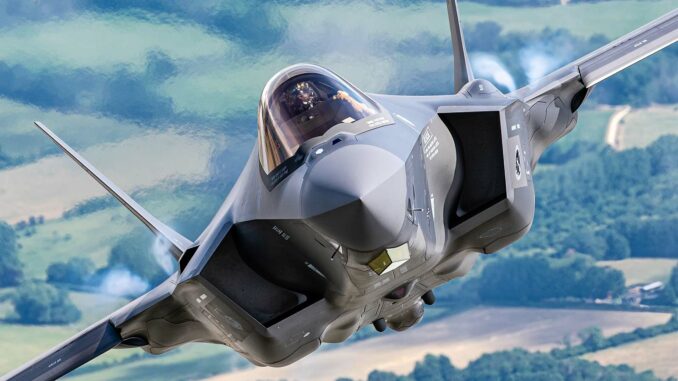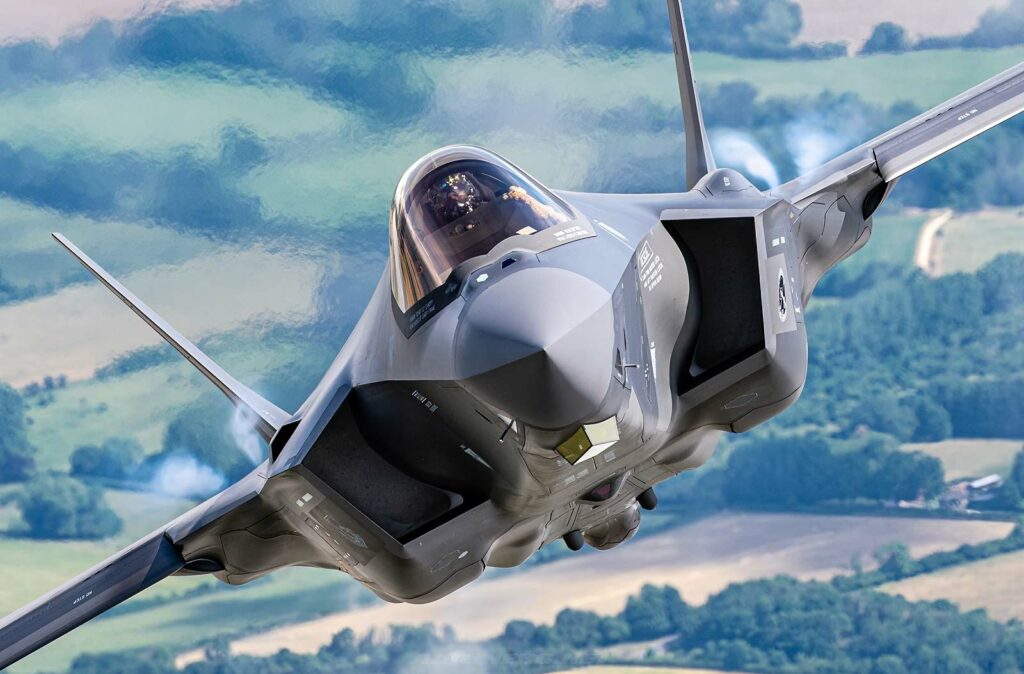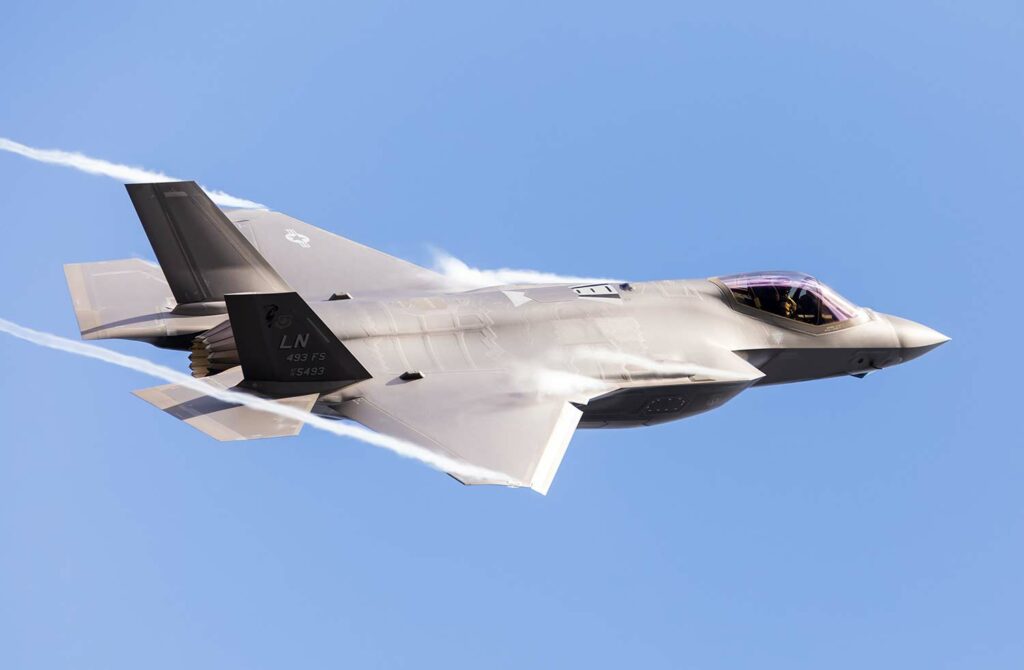
Find out the top speed of the F-35, an advanced fighter jet. Detailed technical analysis and comparison with the fastest fighter jets.
The maximum speed of the F-35 is a subject of interest to aeronautics enthusiasts and military experts alike. Designed as an advanced fighter, the F-35 boasts impressive capabilities. This article takes an in-depth look at the F-35’s top speed, the technologies that make it possible, and compares it with other top fighter jets.

F-35 design and technology
The F-35, also known as the Lightning II, is a multi-role stealth fighter developed by Lockheed Martin. It incorporates several advanced technologies to enhance its flight performance.
Pratt & Whitney F135 engine
The F135 engine is central to the design of the F-35. This high-performance turbofan engine is capable of producing thrust in excess of 190 kN on afterburner. Here are the details of this technology:
- High-efficiency turbofan: The F135 uses an advanced engine core that combines high pressure and temperature to maximize fuel efficiency and power.
- Afterburner: This system injects additional fuel into the engine nozzle after the main turbine. This results in a significant increase in thrust, enabling rapid acceleration and high speeds. In simple terms, the afterburner burns more fuel to produce additional thrust, which is crucial for aerial combat maneuvers.
- Advanced engine control: The F135 is equipped with sophisticated electronic control systems that optimize engine performance in real time, adjusting parameters to meet the needs of the pilot and flight conditions.
Lightweight, aerodynamic materials
The F-35’s design also relies on the use of advanced materials and careful aerodynamics to maximize its performance.
- Composite materials : The F-35 uses carbon-fiber composites to reduce overall weight without compromising structural strength. Composites are lighter than traditional metals, while offering excellent durability and resistance to flight stresses.
- Stealth coatings : The F-35’s surfaces are coated with radar-absorbing materials, making the aircraft more difficult for enemy radar systems to detect. These coatings contribute to the aircraft’s stealth, a crucial advantage in modern combat missions.
- Aerodynamic design: The shape of the F-35 is designed to minimize aerodynamic drag. The wings and fuselage are streamlined to reduce air resistance, enabling higher speeds and better maneuverability. Air intakes and leading edges are also designed to improve aerodynamic efficiency.
- Optimized internal structures : Internal aircraft components, such as the fuel system and cooling ducts, are integrated to maximize space efficiency and reduce weight. This contributes to improved weight distribution and flight performance.
Flight control systems
The F-35 is equipped with advanced flight control systems that enable precise, responsive maneuvers:
- Fly-by-wire: This electronic control system replaces traditional mechanical controls with electronic signals. This enables faster, more precise adjustments, improving the aircraft’s maneuverability and stability.
- Advanced avionics: The F-35 features an integrated flight management system that coordinates the aircraft’s various systems, including navigation, weapons and communication. This system optimizes performance and enables faster decision-making in combat situations.
Maximum F-35 speed
The F-35 can reach a top speed of Mach 1.6, or around 1,975 km/h at high altitude. This speed is sufficient to outpace most modern air threats, and carry out air superiority, ground attack and reconnaissance missions.
Comparison with other fighters
To better understand the F-35’s performance, it’s useful to compare it with other modern fighter jets:
- F-22 Raptor: With a top speed of Mach 2.25 (2,410 km/h), the F-22 is faster than the F-35. However, the F-35 is designed for more versatile missions.
- Eurofighter Typhoon: This European aircraft can reach Mach 2 (2,495 km/h), making it also faster than the F-35. Nevertheless, the F-35 has advanced stealth capabilities that compensate for this speed difference.
- Su-57: This Russian fighter reaches Mach 2 (2,140 km/h). Like the F-35, it is designed to combine stealth and performance.

Advantages and disadvantages of the F-35’s speed
Advantages
- Mission versatility : The F-35’s top speed is adequate for a variety of missions, including offensive and defensive operations.
- Stealth technology: The ability to avoid radar detection partly compensates for the lower speed compared with other fighters.
Disadvantages
- Lower speed than some competitors: Aircraft like the F-22 and Typhoon outperform the F-35 in pure speed.
- Cost and maintenance: Advanced technologies and materials increase maintenance costs.
The top speed of the F-35, at Mach 1.6, makes it a powerful and versatile fighter. Although not the fastest of modern fighter jets, its stealth technologies and multi-role capabilities make it a crucial component of today’s air forces. By combining speed, stealth and versatility, the F-35 has established itself as a key player in military aviation.
War Wings Daily is an independant magazine.